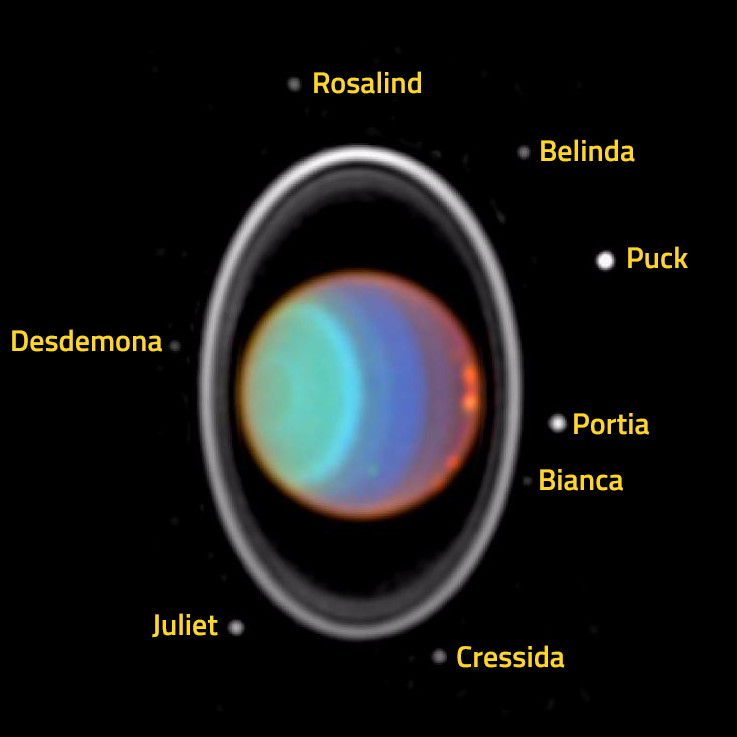Desdemona, a moon of Uranus

Image of Uranus in infrared from Hubble Space Telescope. Image was taken on 28th July 1997, capturing clouds in the atmosphere of Uranus, its rings and 8 of its moons, including Desdemona. Image credit: NASA/JPL/STScI
38,960 miles
44 miles
Desdemona is one of the 27 moons of Uranus. It is the fifth closest moon to orbit the planet, orbiting at an average distance of 62,700 kilometres (38,960 miles). Desdemona has a diameter of 70 kilometres (44 miles) and takes only 11 hours to complete an orbit of the planet.
Desdemona is classed as an inner regular prograde moon of Uranus. It travels around the planet in the same direction of the planet's rotation and is believed to have formed from materials spinning around the planet.
Desdemona is a a member of a group of Uranus' moons called the Portia group. The Portia group contains nine moons (Bianca, Cressida, Desdemona, Juliet, Portia, Rosalind, Cupid, Belinda and Perdita) which have similar appearances and characteristics. These moons may have unstable orbits which leads to the possibility that, at some point in the distant future, they could collide with each other, break up into pieces, form rings or crash into Uranus.
All moons of Uranus get their names from characters in plays written by William Shakespeare or a poem written by Alexander Pope. Desdemona is a major character in William Shakespeare's play Othello, written in 1603 or 1604.
In the play, Desdemona and Othello marry in secret and Desdemona is truly devoted to her husband. Othello is an army general and under his command is Iago, Othello's standard bearer. Although Othello trusts Iago, Iago has a deep hatred for Othello and he convinces Othello that Desdemona is unfaithful to him. Although Desdemona continually protests her innocence throughout the play, Othello doesn't believe her, and ends up killing her. After realising that he has been manipulated by Iago, Othello then kills himself.
Desdemona is also designated as S/1986 U 6 or Uranus X.





